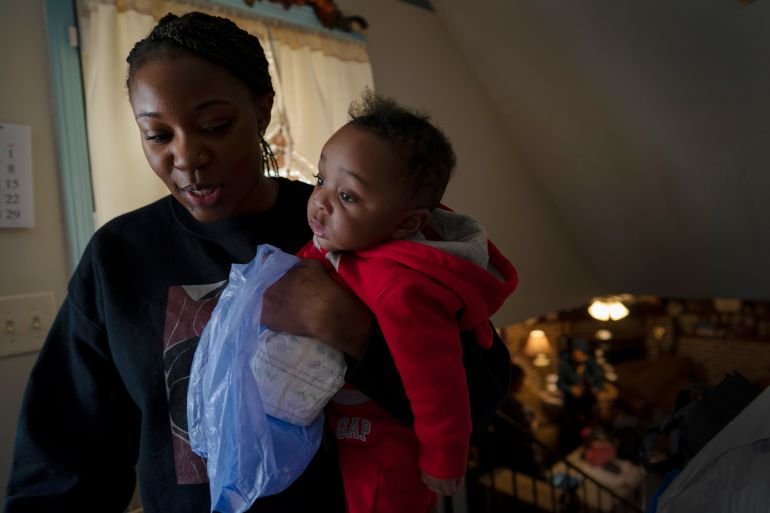US maternal mortality rate findings should be ‘call to action’, researcher says, as deaths more than double in 20 years.

The number of women who died within a year after pregnancy more than doubled between 1999 and 2019 in the United States, a new study has found, with the highest number of deaths recorded among Black women.
The study, published on Monday in the Journal of the American Medical Association, looked at maternal deaths between 1999 and 2019 — but not the COVID-19 pandemic spike — for every US state and five racial and ethnic groups.
There were an estimated 1,210 maternal deaths in 2019, compared with 505 in 1999, the researchers found.
Overall, the number of deaths per 100,000 live births rose from 12.7 to 32.2 in that 20-year span, while the number of deaths among Black women increased from 26.7 to 55.4. The greatest jump over time was seen among American Indian and Alaska Native women, however – from 14 deaths per 100,000 live births in 1999 to 49.2 in 2009.
Dr Allison Bryant, one of the study’s authors and a senior medical director for health equity at Mass General Brigham in Boston, said the findings should be a “call to action”.
“It’s a call to action to all of us to understand the root causes — to understand that some of it is about healthcare and access to healthcare, but a lot of it is about structural racism and the policies and procedures and things that we have in place that may keep people from being healthy,” Bryant said.
Among wealthy nations, the US has the highest rate of maternal mortality, which is defined as a death during pregnancy or up to a year afterwards. Common causes include excessive bleeding, infection, heart disease, suicide and drug overdose.
Rates among Black women have long been the worst in the country, and the problem affects people of all socioeconomic backgrounds. For example, US Olympic champion sprinter Tori Bowie, 32, died from complications of childbirth in May.
Last year, the White House released a plan to address what it called the “maternal health crisis”.
It pledged to increase access to maternal health services, collect more data on maternal health risks, and address gaps in the US perinatal workforce, particularly in underserved areas.
“Each year, thousands of women experience unexpected outcomes of labor and delivery that result in significant short- or long-term consequences to their health such as heart issues, the need for blood transfusions, eclampsia, and blood infections,” the White House said (PDF).
“Systemic barriers, together with a failure to recognize, respect and listen to patients of color, has meant that Black and American Indian/Alaska Native (AI/AN) women, regardless of income or education, experience a greater share of these grave outcomes, as do rural women.”
According to the study released Monday, southern US states had high maternal mortality across all race and ethnicity groups, but especially for Black individuals, while Midwest and Great Plains states had the highest rates for American Indian and Alaskan Native women.
Between 1999 and 2019, the number of deaths per 100,000 live births rose from 9.6 to 20.9 among Asian, Native Hawaiian and other Pacific Islander women; from 9.6 to 19.1 among Hispanic women, and from 9.4 to 26.3 among white women, the researchers said.
“I hate to say it, but I was not surprised by the findings,” Dr Karen Joynt Maddox, a health services and policy researcher at Washington University School of Medicine in St Louis, who wasn’t involved in the study, told The Associated Press news agency.
“It’s certainly alarming, and just more evidence we have got to figure out what’s going on and try to find ways to do something about this.”
Source: Aljazeera
